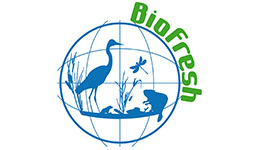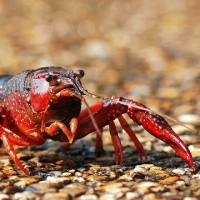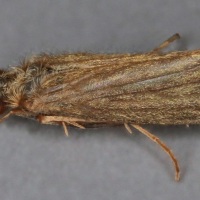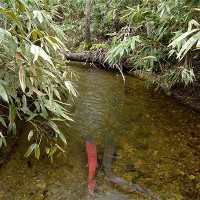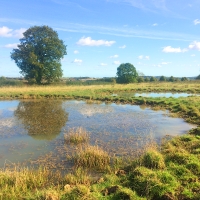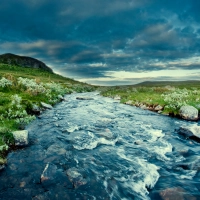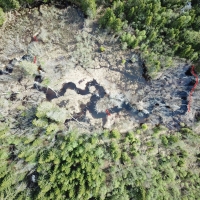Freshwaterecology.info: an online database for European freshwater species
 Freshwater ecosystems are incredibly diverse yet increasingly threatened environments. A study by David Dudgeon and colleagues in 2006 found that freshwater ecosystems were far richer in species than land or marine ecosystems, when compared to the respective areas of the Earth’s surface that they cover.
Freshwater ecosystems are incredibly diverse yet increasingly threatened environments. A study by David Dudgeon and colleagues in 2006 found that freshwater ecosystems were far richer in species than land or marine ecosystems, when compared to the respective areas of the Earth’s surface that they cover.
However, Dudgeon also suggested that freshwater biodiversity was decreasing at a faster rate than land or marine based biodiversity, as a result of a multitude of freshwater stressors such as pollution, overexploitation, habitat destruction, invasive species and the impacts of climate change. The interactions and cumulative effects of this ‘cocktail’ of multiple and emerging freshwater stressors is far from clear, which is why multiple stressors are the key focus for research in the MARS project.
In recent years, numerous European environmental policies have been implemented to protect, conserve and restore the continent’s freshwater ecosystems. Two key pieces of European legislation, the Habitats Directive and the Water Framework Directive, have a strong focus on biodiversity. In the Water Framework Directive (first implemented in 2000), analyses of different “biological quality elements” are used to assess the ecological health and status of water bodies (predominantly using data on biological traits and ecological preferences of freshwater species), which in turn guides funding for conservation and restoration work.
As a result, to properly implement such environmental policy requires comprehensive and detailed information on freshwater species. However, until now, such data has largely been scattered, incomplete and not comprehensive: varying widely in quality and precision. To address this shortfall, the freshwaterecology.info database has been set up to provide comprehensive and harmonised data on the ecological characteristics of European freshwater species, which can be used by scientists, policy makers, environmental managers, students and the public.

Stonefly: an important species in the freshwaterecology.info portal. Image: Graf/Schmidt-Kloiber
The online database categorises organisms by their ‘ecological parameters’ – an amalgamation of biological information and ecological preferences in other categorisations – which include: 1) distribution (e.g., per ecoregion or per catchment); 2) spatial preferences (e.g., stream zonation or altitudinal preferences); 3) habitat preferences (e.g.,hydrological, temperature or salinity preferences); 4) pollution, trophy and saprobity (e.g., different saprobic and trophic indices); and 5) life history (e.g., life span, fecundity, feeding types).
The freshwaterecology.info online database currently holds data on around 20,000 freshwater species across five different organism groups: fish, macroinvertebrates (insects), macrophytes (plants), diatoms and phytoplankton. Much of the data brought together in the portal has been collected and classified by successive, complementary European Union projects, including Euro-limpacs, Refresh, WISER, FAME, EFI+ and BioFresh. The development of the freshwaterecology.info database has been led by Astrid Schmidt-Kloiber and Daniel Hering and now forms a key part of the integrated Freshwater Information Platform.
The integrated freshwaterecology.info database allows users to search by species and ecological parameters, giving comprehensive citations to the authors who supplied the data as well as to the literature references the classifications were based upon. Similarly, it includes taxa entry and validation tools, to allow users to enter and create standardised taxa lists using the database’s taxonomy. All the data accessed through the portal can be exported and downloaded to allow further quantitative analyses.
How might the freshwaterecology.info database be used to help further freshwater science, policy and conservation across Europe? In a recently published journal article in Ecological Indicators, Schmidt-Kloiber and Hering outline a number of examples of how the database could be (and already is) important for freshwater research.
First, presenting species data within ecoregions – an area of land and/or water with a geographically distinct assemblage of species, natural communities, and environmental conditions – rather than within national state boundaries, has allowed for targeted biodiversity analyses such as those of Conti et al 2014 and Hering et al 2009 at appropriate ecoregional scales, using data from freshwaterecology.info.
Second, knowledge on the ecological preferences of freshwater species is a key element of biomonitoring and assessment systems within European policies like the Water Framework Directive. Most ecological assessment strategies require numerically coded biological information on individual species: indeed in a 2012 paper, MARS scientist Sebastian Birk and colleagues found that two-thirds of European river assessment and almost half of lake assessment approaches required such data.
Third, ecological restoration is an increasingly common form of environmental management in a world subject to ongoing human alterations. A key question is how to evaluate the success (or failure) of restoration measures. A review by Verdonschot et al. 2012 on freshwater restoration evaluation highlights the value of biological indicators and ecological preferences in tracking the recovery of a degraded ecosystem following restoration work.

Caddisfly: an important bioindicator species for the health of freshwater ecosystems. Image: Graf/Schmidt-Kloiber
Finally, species traits are commonly used in computer models built by scientists to attempt to forecast how species and ecosystems might respond to climate change in the future. Here, a key focus for research is the ‘sensitivity’ of species to climate altered environmental factors such as water temperature, flow and quantity. Studies such as Hering et al. 2009, Sandin et al. 2014 and Conti et al. 2014 have used data on ecological preferences from the online database to reveal that freshwater species in Mediterranean and high mountain ecosystems are particularly vulnerable to projected changes in climate.
The formation of the freshwaterecology.info database provides a significant step forward in the comprehensiveness, accessibility and use of freshwater biodiversity data in Europe. As Schmidt-Kloiber and Hering write in their new paper, “A sound understanding of ecological functioning is a prerequisite for the implementation of biological approaches into European aquatic ecosystem management.”
Depending on funding, the database will continue to grow in both content and use in the future. Data is continually being added, filling species gaps, and providing new information for scientists to undertake new research and analysis to respond to both existing and emerging trends and threats in European freshwater ecology. As such, freshwaterecology.info is an invaluable tool.
Astrid Schmidt-Kloiber describes the potential and challenges offered by the freshwaterecology.info database, “We are grateful to all contributing experts and acknowledge the balancing act they had to manage when codifying their comprehensive ecological knowledge and translating it into numerical values. Finally, we have achieved a great and important goal and moved harmonised assessments throughout Europe a big step forward. Still, the database also shows us the knowledge gaps and the urgent need for more basic research, for example regarding the general distribution of some species or the temperature preferences and dispersal capacities often called for in global change modelling.”


